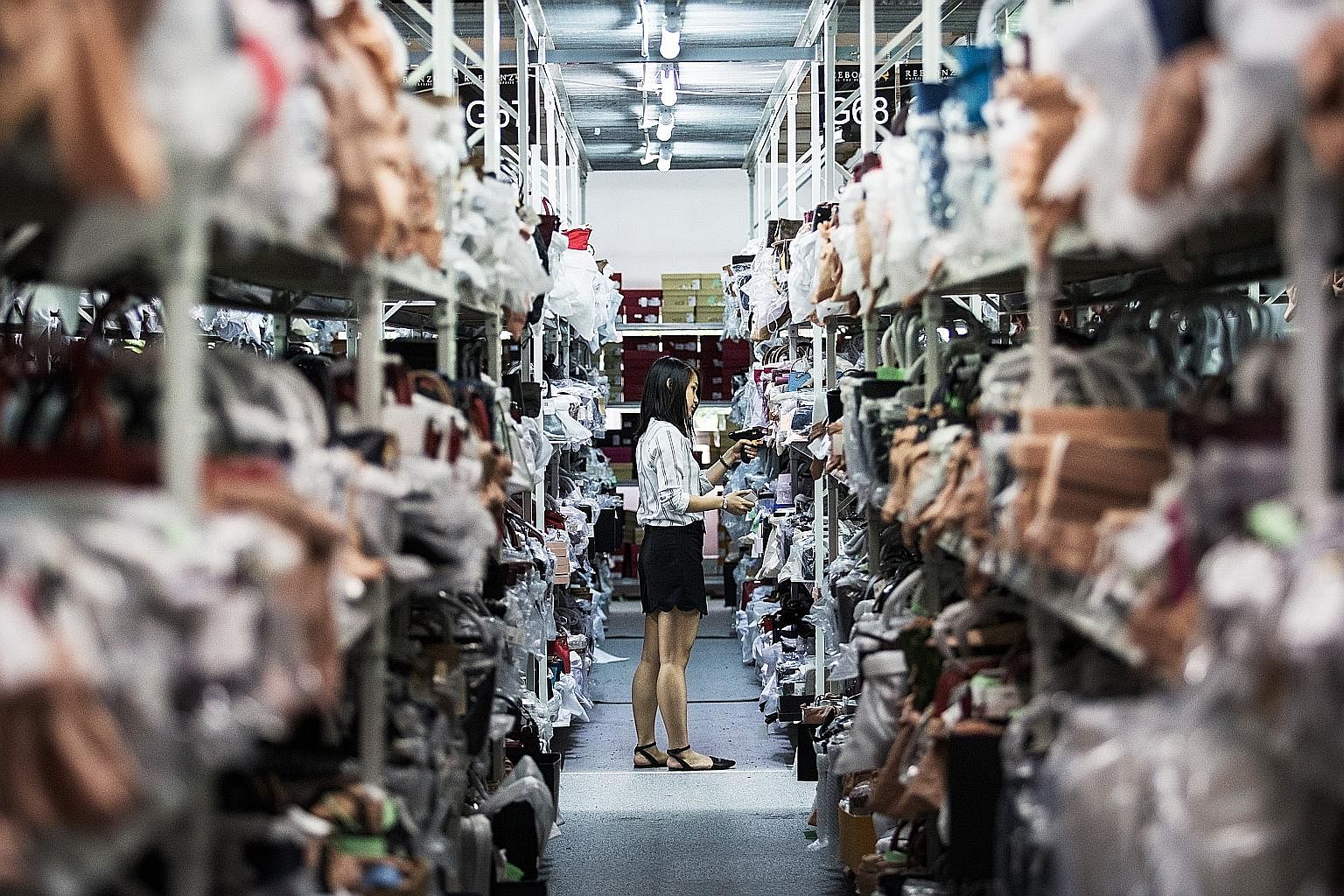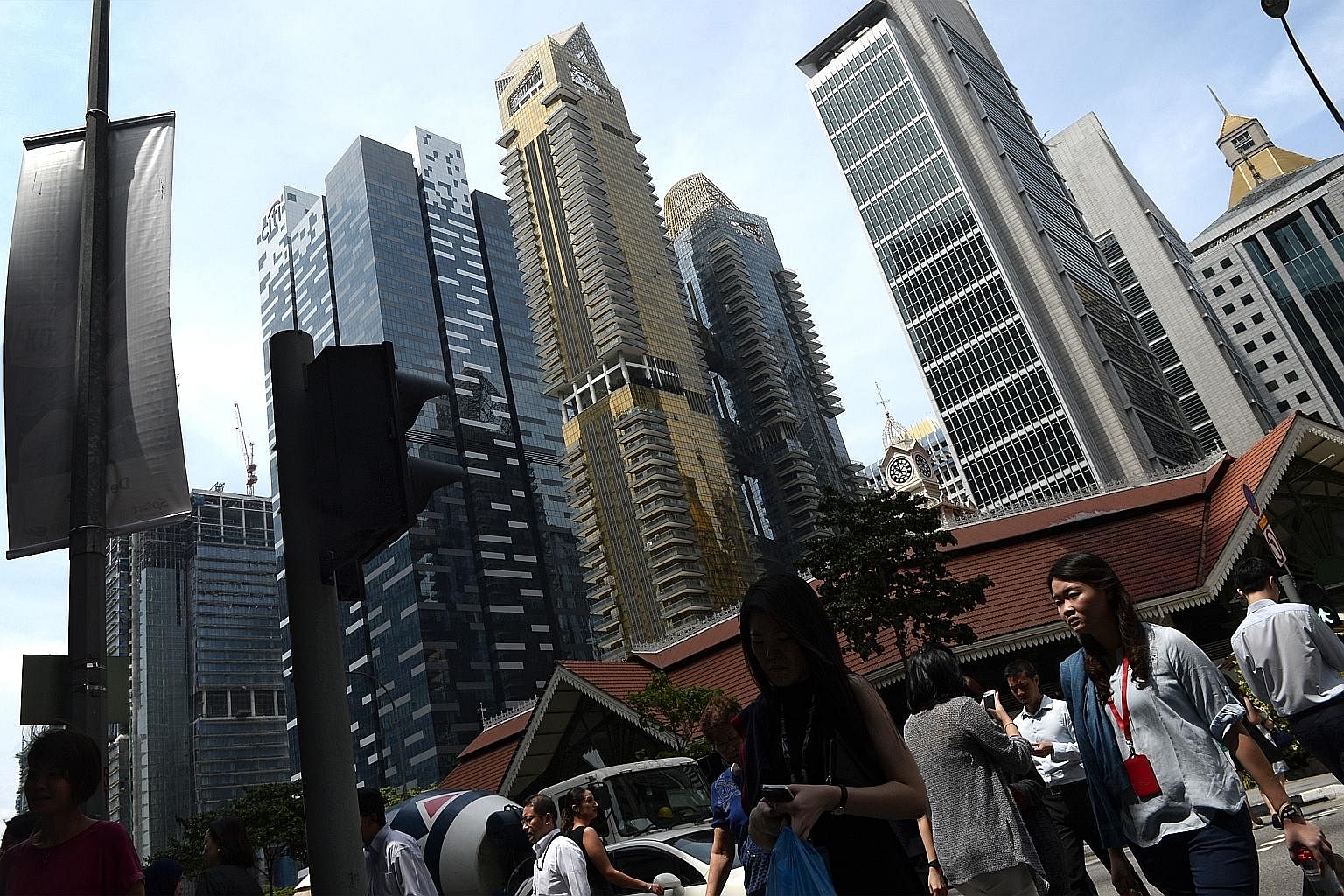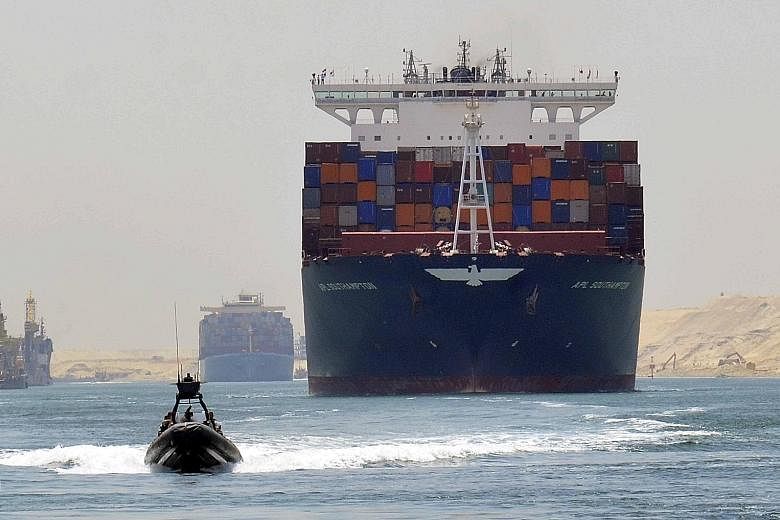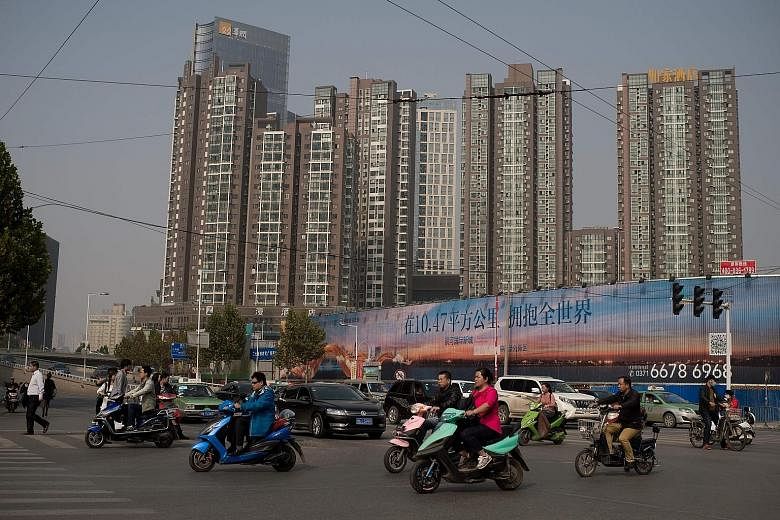A year ago when International Monetary Fund (IMF) chief economist Maurice Obstfeld arrived at the institution, three big worries loomed. The first was whether China, the No. 2 economy, would succeed in rebalancing its economy. The others were: the struggles of commodity exporters suffering steep falls in demand, and the US Federal Reserve's first liftoff in interest rates.
These days, to all of the above - the Fed is widely believed to be poised for a second lift in rates - add two more.
One is a persistent slowdown in the growth of trade relative to gross domestic product and deflationary pressures. The other, political uncertainties are rising across the globe and that's bad news for the world economy.
These factors led the IMF to yet again cut this year's growth forecast for the global economy to just 3.1 per cent in the World Economic Outlook published early this month. That's lower than the forecast it offered a year ago, which was revised only this April to 3.2 per cent growth - considered lower than "moderate" expansion.
Things, clearly, are slipping. Should the world economy expand any slower it would begin to feel like a recession.
"On the political front, conditions have moved to the downside," says Mr Obstfeld. "A year ago, we did not expect Brexit to happen. Beyond that, there is a continuation and intensification of negative political developments. There is a backlash against globalisation that holds out negative prospects for not only igniting trade growth, but actually, (the likelihood of) an increase in protectionist measures in the coming years."
-
BRIGHT SPOTS IN A DISMAL LANDSCAPE
China appears to have managed to stabilise its growth slowdown, while India's economy is poised to accelerate on the back of a good monsoon. The Asian giants will continue to lead regional growth. Here is what the Monetary Authority of Singapore forecasts for growth in some key Asian economies next year. The list is arranged according to the size of the economy for which growth is forecast.
CHINA: 6.3
INDIA: 7.7
INDONESIA: 5.3
MALAYSIA: 4.3
PHILIPPINES: 6.1
It is a scary prospect, especially for trade-dependent economies such as Singapore and Malaysia, not to speak of the bigger economies in the region such as South Korea and Japan. A slowdown in trade, caused mainly by poor demand from China and its proclivity to have more done at home, has already begun to show on their economic graphs - see how Singapore's economy has gone into a funk (see other story).
But more is to come. The message emerging from the United States presidential campaign is not at all reassuring, even if some of it is related to the heat of election rhetoric. Indeed, some of the promised initiatives meant to boost trade, whether the Asia-related Trans-Pacific Partnership or even European-linked pacts such as the Transatlantic Trade and Investment Partnership (TTIP), seem to be at risk.
In the East Asian region, things are even less reassuring. Although China seems to have arrested the growth slowdown, its struggles with its economic rebalancing look set to continue for many years, with the fear that things may worsen. One worry is that the debt pile-up has now begun to affect a sector hitherto considered fairly healthy - real estate lending - as Beijing frantically tries every gas pedal it has at its disposal to keep driving growth.
Besides, China's reluctance to countenance bad debts in its banking system - its lenders offer borrowers some of the easiest refinancing options in order to stop them from announcing soured loans - only means that the can is being kicked down the road.
CAN INDIA PROVIDE A BOOST?
The IMF identifies India, Asia's No. 3 economy and the world's second-largest nation by population, as an Asian growth spot. But to many, that's an illusion as well.
For one thing, like China, India is bent on lengthening its domestic supply chain. This is the reason it is pushing initiatives such as Make In India. Worse, rather than opening its markets, it may be actually pruning access to them. By some estimates, Prime Minister Narendra Modi's government, which carries a profile of being progressive and pro-business, has imposed no fewer than 500 protectionist measures since taking office in May 2014.
Mr Ruchir Sharma, head of emerging markets for the Wall Street firm Morgan Stanley, identifies four broad trends that are affecting the global economy: Depopulation, deglobalisation, debt that is spiralling out of control and de-democratisation.
Mr Sharma, who has acquired the status of something of an oracle since the publication of two best-selling books on the global economy, puts the population issue at the top of the list.
"We grew up thinking the biggest threat was far too many people," he says. "Today, the problem is far too little. Demographic trends have become a headwind from what used to be a tailwind."
In China, he points out, the working-age population actually shrank last year. In India, fertility rates have dropped dramatically. Mr Sharma thinks the current malaise has nothing to do with the lingering effects of the global financial crisis, but more to do with population growth and productivity.
In Japan, he says, trend growth cannot be more than half a percentage point simply because of the pace at which its population is ageing.
SHUTTERS ARE GOING UP
As the IMF pointed out in its report this month, the other worrying trend is deglobalisation. For nearly four decades, as money and goods flowed from every corner of the earth to the other, the world had begun to assume this was something to be taken for granted. However, after peaking in 2008, around the time the global financial crisis hit home, global trade started to decline as a share of gross domestic product.
With that has come a backlash against immigration, most dramatically manifested in the dramatic results this June of the British referendum on leaving the European Union. Mr Barry Desker, the Singapore diplomat and former head of the trade-promotion body, warned recently in these columns that the era of globalisation may be drawing to a close, "akin to the shift that took place at the start of the 20th century when World War I ended a time of open trade and protectionist policies came to the fore during the Great Depression".
Alongside has come a drop in the popularity of political leaders and their perceived legitimacy. Ironically, only those leaders who whip up nationalism are bucking this trend, notes Mr Sharma.
To be sure, there are bright spots on the Asian horizon: the Philippines, Vietnam and Indonesia are among the notables in South-east Asia that are doing well. South Asian nations, generally, are not doing badly either, including Pakistan.
But these countries do not have enough ballast to lift regional boats. And the Philippines, under President Rodrigo Duterte, is making foreign-policy shifts that may well impact on the economic upswing it is currently enjoying.
A CASE OF MUDDLING THROUGH
Still, these are minnows when it comes to powering global growth. The big worry, according to some analysts, is that advanced nations are poised to slow, and some may fall into recession.
Fitch Ratings, for instance, recently cut its projection for this year's US growth to 1.4 per cent, from 1.8 per cent three months ago. Meanwhile, euro-zone growth may have peaked earlier this year.
"The outlook for the advanced countries is best described as a low-growth, muddle-through path," says Fitch chief economist Brian Coulton. "Advanced-country growth over 2016 to 2018 will be hardly any better than the lacklustre 1.5 per cent average growth rate seen over 2011 to 2015. Moreover, downside risks to advanced-country growth have increased."
Although the US labour market has tightened and the Fed may feel confident enough to raise rates at year end - one more reason money may still leave China in large doses - some think the No. 1 economy, too, may have a recession on its hands before long.
A recent survey by the Wall Street Journal showed the odds of the next economic downturn happening in the next four years to be 60 per cent. That's because the current expansion, though sluggish in comparison to previous growth periods, has run for an unusually long 88 months.
But the US Fed may probably be the only central bank looking to tighten policy. The big worry, really, is that central banks elsewhere may not have the solutions to kick up global growth this time, many having cut rates to deep lows already.
That won't stop them from trying to stimulate growth, of course. The European Central Bank, for instance, is expected to continue its asset-purchase programme - quantitative easing, essentially - beyond the March 2017 date at which it was to have ended. Meanwhile, the new monetary policy approach of the Bank of Japan looks like it will take the policy rate deeper into negative territory.
But how long can you keep the gas pedal pressed to the floor without causing massive economic distortions, is the question.
Shedding light on slowing growth: What ails Singapore's economy?

Singapore's small, trade-dependent economy is under the weather - and likely to remain so for some time.
While the country has not yet sunk into a full-blown recession, its fortunes are tied closely to those of the world economy and the outlook there is far from cheery.
Advance estimates tip Singapore's growth to come in at just 0.6 per cent in the July to September period, compared with the same quarter a year ago, the weakest rate since 2009.
Shedding light on slowing growth: The experts' take

The fundamental shift that the Singapore economy is undergoing is to make a transition from an era of catch-up growth to becoming a mature economy that delivers a high rate of indigenous innovation, said Dr Hoon Hian Teck, professor of economics at Singapore Management University.
At the same time, the Singapore economy, along with other developed economies, is having to cope with the changes brought about by the opportunities and disruptions of automation, machine learning and artificial intelligence.
When an economy undergoes a major reorganisation to prepare its workforce for indigenous innovation, resources are used up in intangible investment, he added.




